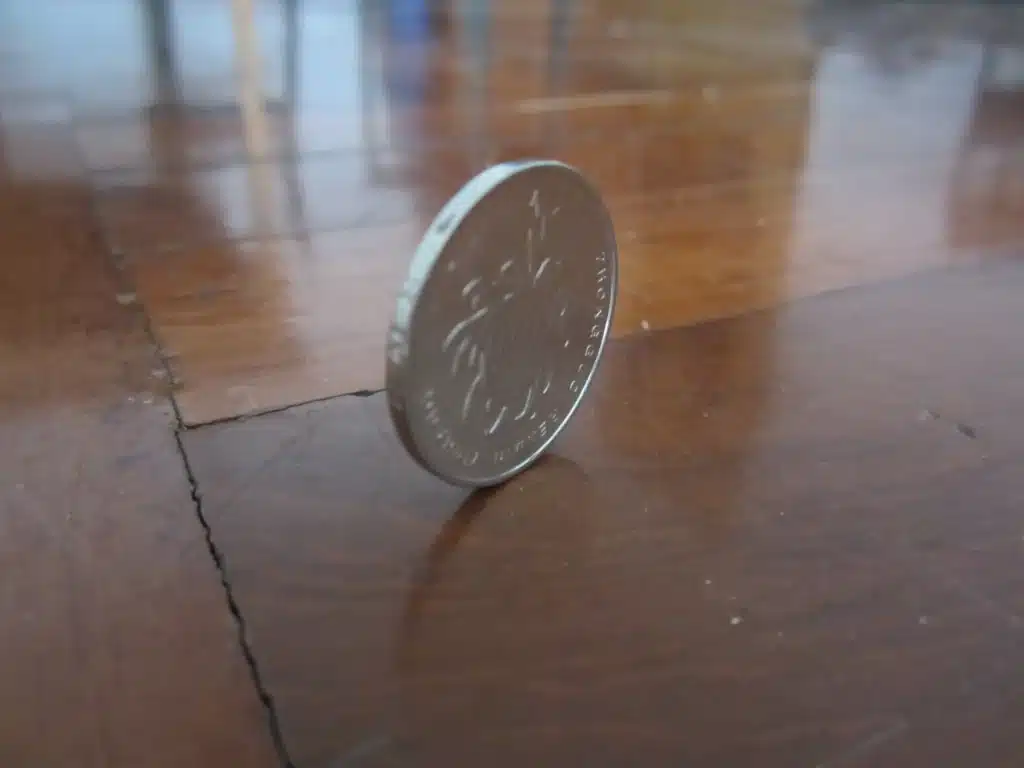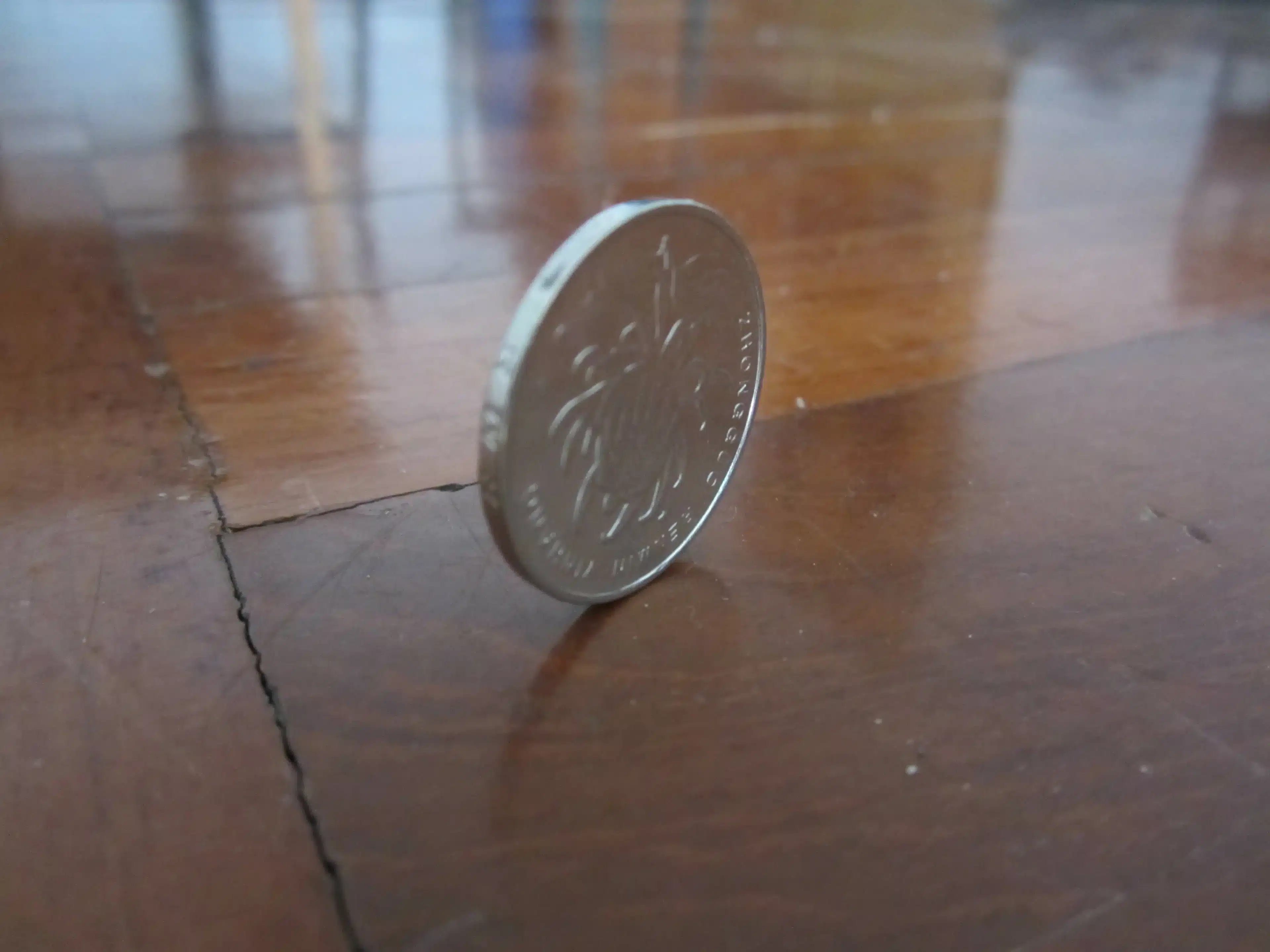
When it comes to making a decision, flipping a coin is often seen as a fair and unbiased method. The simplicity of flipping a coin makes it an appealing choice, but have you ever wondered if it's truly a 50/50 chance? In this article, we delve into the intriguing question: Is flipping a coin really 50/50 or is it 49/51? We explore the concept of probability, factors that can influence the outcome, and the arguments surrounding the fairness of coin flips.
The Basics of Coin Flipping
Flipping a coin is a simple act that involves tossing a coin in the air and allowing it to fall to the ground. The two possible outcomes of a coin flip are heads or tails, often represented by "H" and "T" respectively. Coins used for flipping are typically round and made of metal, with one side featuring a design, often referred to as the obverse, and the other side displaying a different design, known as the reverse.
Probability: Understanding the Odds
Probability is the mathematical concept that measures the likelihood of a particular event occurring. When it comes to flipping a fair coin, where both sides are equally likely to land facing up, the probability of getting heads or tails is 1 in 2 or 50%. This assumption is based on the principle of equally likely outcomes.
Factors Affecting Coin Toss Outcomes
While the ideal scenario suggests a 50/50 probability for a coin flip, several factors can influence the actual outcome. These factors include the initial position of the coin, the force applied during the flip, the angle at which the coin is released, and the presence of any external factors such as wind or surface irregularities.
The Role of Physics in Coin Flips
Coin flips may seem like a random event, but physics plays a crucial role in determining the outcome. The trajectory, speed, and angular momentum of the coin during the flip all contribute to the final result. Factors such as air resistance, gravity, and the physical properties of the coin itself influence the flight path and landing position.
The Controversy: Is It Truly 50/50 or 49/51?
The fairness of coin flips has sparked debates among mathematicians, statisticians, and probability experts. While the ideal theoretical probability suggests a 50/50 chance, some argue that real-world conditions and imperfections in coin design can result in slight biases. These biases may lead to a 49/51 split in favor of one side.
Debunking Common Myths About Coin Tosses
Several myths and misconceptions surround the concept of coin tosses. Let's address a few of these popular beliefs:
- Myth: Flipping a coin multiple times increases the chances of getting the opposite outcome.
- Myth: A coin that has landed on heads multiple times in a row is more likely to land on tails in the next flip.
- Myth: A coin with a heavier head is more likely to land on tails.
The Gambler's Fallacy: Misunderstanding Probability
The Gambler's Fallacy refers to the mistaken belief that past events in a random sequence influence the likelihood of future events. In the context of coin flips, this fallacy suggests that if a coin has landed on heads multiple times in a row, it is "due" to land on tails. However, each coin flip is an independent event with no connection to past outcomes.
Coin Bias: Can Coins Actually Be Biased?
While coins are designed to be fair and unbiased, certain imperfections can create slight biases. Factors like uneven weight distribution, asymmetrical designs, or wear and tear over time can influence the outcome of a coin flip. However, the degree of bias is typically negligible and does not significantly impact the 50/50 probability in most cases.
Psychological Factors in Coin Tosses
Coin flips are not solely influenced by physical factors but can also be influenced by psychological factors. The person performing the flip may have subconscious biases or patterns in their tossing technique, leading to non-random results. Additionally, the observer's perception and judgment of the coin's landing can introduce subjective interpretations of the outcome.
Alternative Methods of Decision Making
While flipping a coin is a popular method of decision-making, there are various alternatives to consider. Some individuals prefer other randomization methods like dice rolls, random number generators, or even asking a trusted third party for their input. Ultimately, the choice of decision-making method depends on personal preference and specific circumstances.
The Impact of Coin Flipping in Various Fields
Coin flips have found applications beyond decision-making in various fields. Let's explore a few areas where coin flips play a role:
- Sports: Coin tosses are commonly used in sports to determine which team gets to choose their side, possession, or kick-off.
- Politics: Coin flips have been employed to break ties in elections or determine the order of speakers in debates.
- Arbitration: Coin flips can serve as a neutral method for resolving disputes or allocating resources fairly.
- Research and Experiments: Coin flips are utilized in research studies and experiments as a means of random assignment or selecting control groups.
Famous Instances Where Coin Flips Decided the Outcome
Coin flips have had notable impacts in history and have determined crucial outcomes. Here are a few famous instances:
- The Apollo 11 Mission: The decision to send Neil Armstrong or Buzz Aldrin as the first astronaut to step on the moon was made through a coin toss.
- Super Bowl Coin Tosses: The Super Bowl uses a coin toss to determine which team gets the first possession.
- Tiebreaker in Sports: In various sports, coin tosses are used as tiebreakers. For example, in tennis, a coin toss determines which player serves first in a match. In soccer, a coin toss may determine which team kicks off the game.
- Legal Proceedings: In some legal proceedings, such as the selection of jurors, a coin flip can be used to randomly determine the order of selection.
- Entertainment: Coin flipping is often used in magic tricks and games to add an element of chance and suspense.
The Evolution of Coin Tosses in History
Coin tossing dates back to ancient times, and its use has evolved over the centuries. While the exact origin is unclear, it is believed that coin flipping was practiced in ancient Greece and Rome as a way to seek the guidance of the gods in decision-making. Over time, it has become a widely recognized method for resolving disputes and making choices.
Cultural Significance and Symbolism of Coin Flips
Coin flipping has gained cultural significance and symbolism in various societies. In some cultures, it is associated with luck, while in others, it represents fairness and impartiality. The act of flipping a coin has even been used as a metaphor for making difficult choices or leaving things to chance.
Coin Flips in Pop Culture
Coin flips have made appearances in numerous forms of popular culture, including movies, literature, and music. They often serve as plot devices or symbols to explore themes of chance, fate, and decision-making. From iconic movie scenes to famous literary quotes, coin flips have become ingrained in our collective imagination.
Fun Facts: Coin Tosses That Defied the Odds
While the odds of a fair coin landing on heads or tails are equal, some coin tosses throughout history have defied expectations. Here are a few intriguing examples:
- The Flipping Robot: In 2009, a robot designed at the University of British Columbia was able to flip a coin and catch it 10 out of 10 times. This remarkable feat showcased the robot's precision and control.
- The Never-Ending Flip: In 2011, a team of researchers in Germany created a device that could flip a coin in such a way that it would keep spinning indefinitely. This mesmerizing display of physics defied the typical outcome of a coin toss.
- The Lucky Streak: In 1950, a football referee named Jack Best flipped a coin before a game, and it landed on heads 25 consecutive times. The odds of such a streak occurring are incredibly slim, making it a remarkable coincidence.
Coin Flipping Experiments: DIY Investigations
If you're curious about the fairness of coin flips and want to conduct your own experiments, here are a few simple investigations you can try:
- Flip and Record: Flip a coin 100 times and record the number of heads and tails. Compare the results to the expected 50/50 outcome and analyze any deviations.
- Multiple Flippers: Invite friends or family members to flip coins simultaneously and compare the results. This experiment explores whether different individuals produce similar outcomes.
- Biased Coin Check: Examine a coin for any visible signs of bias, such as weight imbalance or noticeable wear. Then, test the coin's fairness by flipping it multiple times and assessing the results.
Practical Applications of Coin Flips
Beyond decision-making, coin flips have practical applications in various fields. Some examples include:
- Random Sampling: Coin flips are used in statistical sampling to create unbiased samples for research or surveys.
- Random Number Generation: Coin flips can be used as a basis for generating random numbers in computer algorithms and simulations.
- Cryptography: Coin flipping protocols serve as a fundamental tool in cryptographic schemes for generating shared secrets or achieving secure communications.
Ethical Alternatives to Coin Flips
While coin flipping is a widely accepted method for decision-making, some argue that it may not be the most ethical choice in certain situations. Here are a few alternatives to consider:
- Collaborative Decision-Making: Engage in open discussions and deliberations with all parties involved to reach a consensus or compromise.
- Decision Matrices: Use decision matrices or weighted scoring systems to objectively evaluate options based on predetermined criteria.
- Expert Consultation: Seek advice from subject matter experts or trusted individuals who can provide insights and guidance in decision-making.
Conclusion
In conclusion, the question of whether flipping a coin is truly 50/50 or 49/51 raises intriguing points about probability, physics, and human factors. While the idealized notion suggests equal chances, factors like coin biases, physical influences, and psychological tendencies can introduce subtle biases. Nevertheless, flipping a coin remains a popular and widely recognized method for decision-making, valued for its simplicity and the element of chance it brings to choices.
Remember, whether you're flipping a coin or exploring alternative decision-making methods, the most important aspect is to ensure fairness, transparency, and a thorough understanding of the factors involved. So, next time you find yourself pondering a decision, ask yourself: Is flipping a coin really 50/50 or is it 49/51?
FAQs
Q. Can a biased coin significantly affect the fairness of a coin flip?
A. While biased coins can influence the outcome of a flip, the biases are usually minor and do not dramatically alter the 50/50 probability in most cases.
Q. Does the way you flip a coin impact the outcome?
A. Yes, the way you flip a coin, including the force applied, angle, and initial position, can influence the outcome. However, these factors are difficult to control precisely.
Q. Are there any reliable methods to ensure a fair coin flip?
A. Using a well-designed, symmetrical coin and flipping it in a consistent manner can help ensure a fairer outcome.
Q. Can psychological factors influence coin tosses?
A. Yes, psychological factors like biases, subconscious patterns, and subjective interpretation of outcomes can introduce non-random elements to coin flips.
Q. Are there ethical concerns related to using coin flips for decision-making?
A. Ethical concerns may arise in situations where the stakes are high, and alternative decision-making methods that involve more deliberation or expertise might be more appropriate.
Q. Are there any historical instances where a coin toss had a significant impact?
A. Yes, notable examples include decisions related to space missions, sports events, and legal proceedings where coin tosses determined crucial outcomes.

